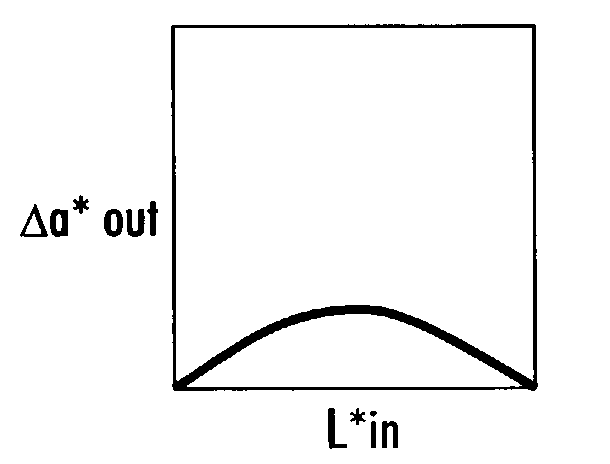Method for color cast removal in scanned images
a color cast and scanned image technology, applied in the field of electronic imaging, can solve the problems of image degradation, color cast is generally considered an overall color imbalance in an image, and the predominance of color ruins the whole image, so as to achieve the effect of eliminating possible quantization errors
- Summary
- Abstract
- Description
- Claims
- Application Information
AI Technical Summary
Benefits of technology
Problems solved by technology
Method used
Image
Examples
Embodiment Construction
[0019]Previous methods for performing color cast correction (or hue shift) used RGB space or CMY space, where three TRC's were generated to make small adjustments in each of the separations as needed. Exemplary TRC's for cyan, magenta and yellow are shown in FIGS. 1-3, respectively. Many image processing systems use L*a*b* space in the image path, it is desirable to perform any color cast correction in the same space in order to avoid multiple quantization steps in conversion between spaces.
[0020]Instead of a full-scale to full-scale TRC, the method of the invention uses a color correction curve based on L* for each of a* and b*, and then multiplies the result by a clipping function to ensure that the new values do not exceed full scale. Referring to FIG. 4, a color cast correction curve according to the invention is shown. This curve has L* as the X-axis and Δa* as the Y-axis. When L* has a zero value (it is black), Δa* is zero. Similarly, when L* has its maximum value (it is white...
PUM
 Login to View More
Login to View More Abstract
Description
Claims
Application Information
 Login to View More
Login to View More - R&D
- Intellectual Property
- Life Sciences
- Materials
- Tech Scout
- Unparalleled Data Quality
- Higher Quality Content
- 60% Fewer Hallucinations
Browse by: Latest US Patents, China's latest patents, Technical Efficacy Thesaurus, Application Domain, Technology Topic, Popular Technical Reports.
© 2025 PatSnap. All rights reserved.Legal|Privacy policy|Modern Slavery Act Transparency Statement|Sitemap|About US| Contact US: help@patsnap.com



